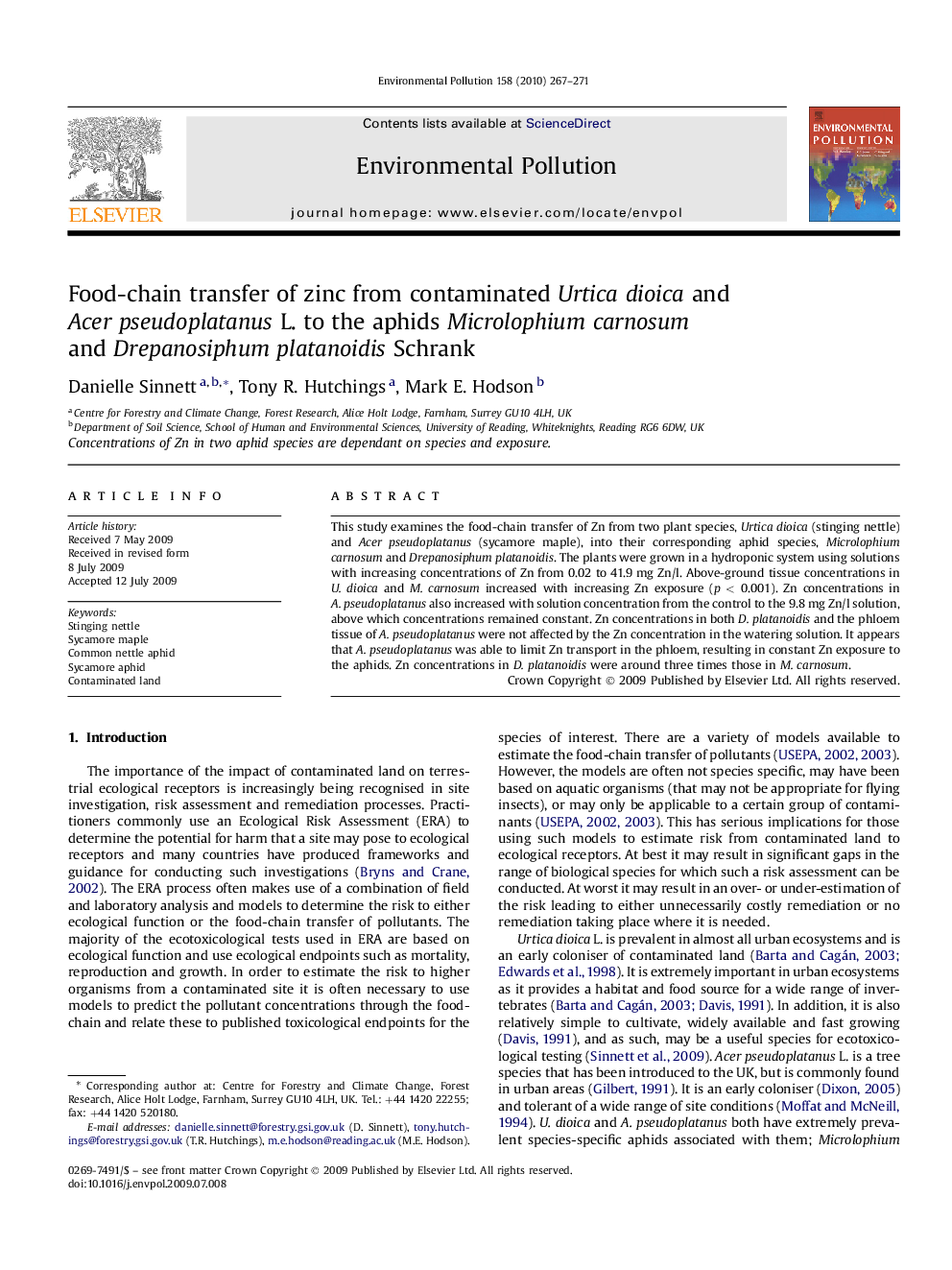| Article ID | Journal | Published Year | Pages | File Type |
|---|---|---|---|---|
| 4425796 | Environmental Pollution | 2010 | 5 Pages |
This study examines the food-chain transfer of Zn from two plant species, Urtica dioica (stinging nettle) and Acer pseudoplatanus (sycamore maple), into their corresponding aphid species, Microlophium carnosum and Drepanosiphum platanoidis. The plants were grown in a hydroponic system using solutions with increasing concentrations of Zn from 0.02 to 41.9 mg Zn/l. Above-ground tissue concentrations in U. dioica and M. carnosum increased with increasing Zn exposure (p < 0.001). Zn concentrations in A. pseudoplatanus also increased with solution concentration from the control to the 9.8 mg Zn/l solution, above which concentrations remained constant. Zn concentrations in both D. platanoidis and the phloem tissue of A. pseudoplatanus were not affected by the Zn concentration in the watering solution. It appears that A. pseudoplatanus was able to limit Zn transport in the phloem, resulting in constant Zn exposure to the aphids. Zn concentrations in D. platanoidis were around three times those in M. carnosum.
